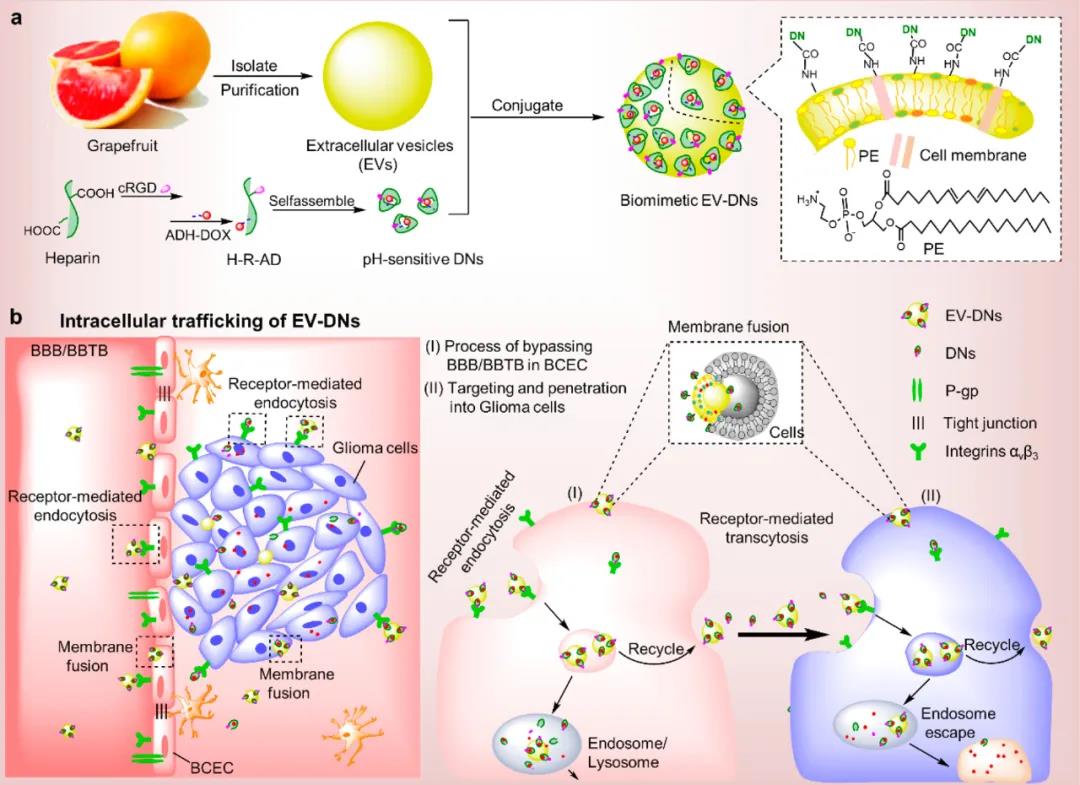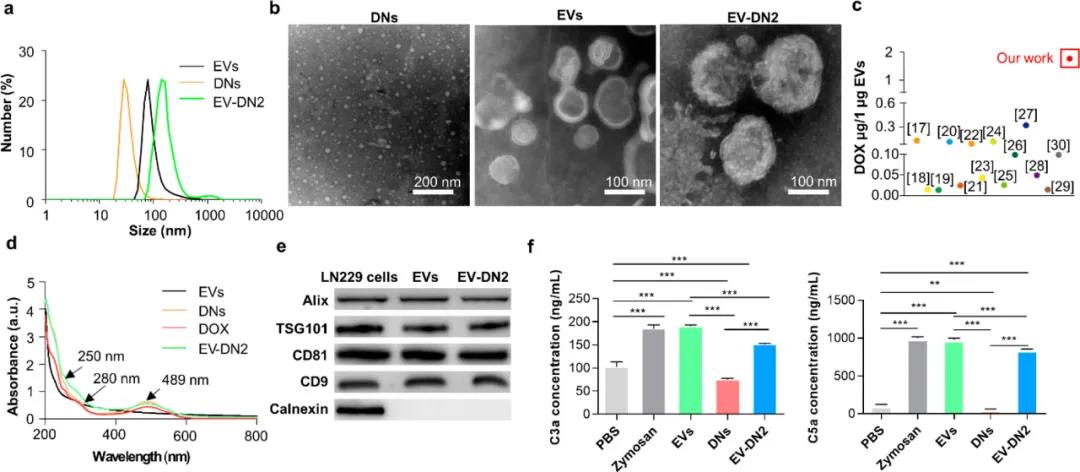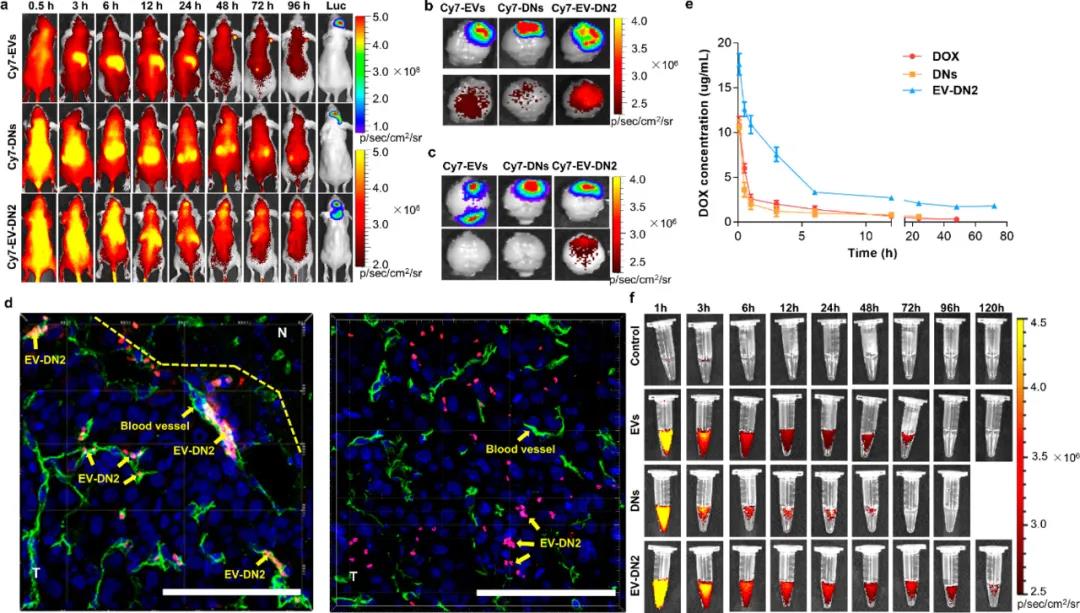Southern Medical University Nano. Lett: A new plant-derived extracellular vesicle nano-drug delivery system for glioma treatment
QQ Academic Group: 1092348845
Detailed
Due to the existence of the blood-brain barrier/blood-brain tumor barrier (BBB/BBTB), the existing nanoparticle-mediated drug delivery systems are still ineffective in delivering systemic chemotherapy drugs to gliomas. Associate researcher Wang Ying and Professor Fan Junbing from Southern Medical University attached doxorubicin-loaded heparin-based nanoparticles (DNs) to the surface of natural grapefruit extracellular vesicles (EVs) to construct a bionic EV-DNs and use them in Realize efficient drug delivery, thereby significantly improving the therapeutic effect of glioma.

Key points of this article:
(1) Compared with the traditional EVs packaging strategy, this repair method can achieve a 4 times enhanced drug carrying capacity. Studies have shown that the biomimetic EV-DNs can bypass BBB/BBTB and enter glioma tissues through receptor-mediated endocytosis and membrane fusion, which greatly promotes their ability to be internalized by cells and resist cell proliferation, and prolong their Circulation time in the body.

(2) Experiments have also proved that EV-DNs with high abundance can be detected in glioma tissues, which indicates that EV-DNs have a high uptake effect in brain tumors and can exert good anti-glial properties in vivo The efficacy of tumor.

references:
Wenbo Niu. et al. A Biomimetic Drug Delivery System by Integrating Grapefruit Extracellular Vesicles and Doxorubicin-Loaded Heparin-Based
Nanoparticles for Glioma Therapy. Nano Letters. 2021
DOI: 10.1021/acs.nanolett.0c04753
https://pubs.acs.org/doi/10.1021/acs.nanolett.0c04753

Key points of this article:
(1) Compared with the traditional EVs packaging strategy, this repair method can achieve a 4 times enhanced drug carrying capacity. Studies have shown that the biomimetic EV-DNs can bypass BBB/BBTB and enter glioma tissues through receptor-mediated endocytosis and membrane fusion, which greatly promotes their ability to be internalized by cells and resist cell proliferation, and prolong their Circulation time in the body.

(2) Experiments have also proved that EV-DNs with high abundance can be detected in glioma tissues, which indicates that EV-DNs have a high uptake effect in brain tumors and can exert good anti-glial properties in vivo The efficacy of tumor.

references:
Wenbo Niu. et al. A Biomimetic Drug Delivery System by Integrating Grapefruit Extracellular Vesicles and Doxorubicin-Loaded Heparin-Based
Nanoparticles for Glioma Therapy. Nano Letters. 2021
DOI: 10.1021/acs.nanolett.0c04753
https://pubs.acs.org/doi/10.1021/acs.nanolett.0c04753
- Previous: Wang Cheng from Wuhan
- Next: A Rising 2D Star: Nove


 Academic Frontier
Academic Frontier
